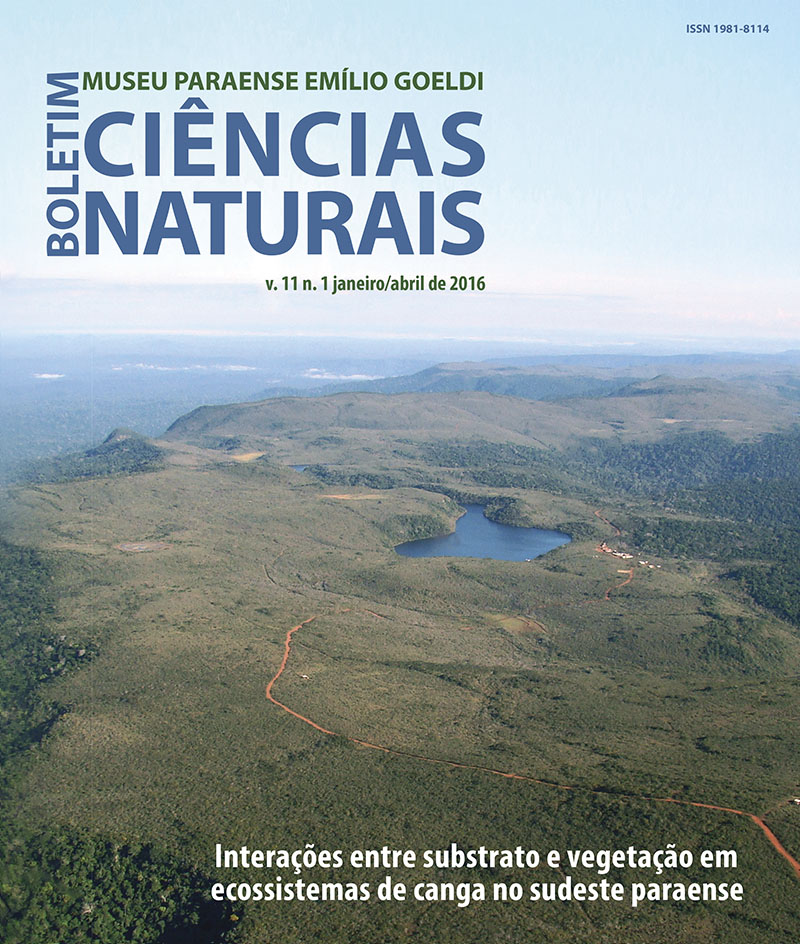Metalliferous soils: chemical attributes in different phytophysiognomies of the Serra Sul, Serra dos Carajás, Pará, Brazil
DOI:
https://doi.org/10.46357/bcnaturais.v11i1.459Keywords:
Canga ferrífera, Soil fertility, Rupestrian ferruginous fields, Canga soilsAbstract
The different phytophysiognomies that occur in formations rich in iron-Plateau canga ferrífera on national forest of Carajás, known as Serra Sul, located in the south west of the State of Pará, have peculiar vegetation rich in endemics, and currently are subjected to pressure from mining, however are little studied. In this sense, the objective of this study was to identify the chemical attributes that correlate in different physiognomies of canga. Soil sampling was carried out in depth ranging from 0.05 to 0.20 cm because the canga hematítica form large blocks of hard minerals, which varies in different phytophysiognomies: campo rupestre aberto (CR.AB), campo rupestre arbustivo (CR.AR), capão florestal (CF), mata de encosta (ME), mata de buritizais (MB) and capão florestal lacustre (CFL).Was rated the pH, organic carbon, total nitrogen, available phosphorus, potassium, calcium, magnesium, sodium, aluminum, exchangeable cationic exchange capacity, base saturation, total bases and saturation of aluminum. The results were analyzed through uni and multivariate statistical. The soils of the physiognomies studied showed high acidity and very low levels of phosphorus, potassium, magnesium and calcium. Multivariate analysis allowed a clear distinction between four distinct groups associated with the fertility of the soil: 1) CR.AR, CF, CFL; 2) ME; 3) MB and 4) CR.AB.
Downloads
Published
Issue
Section
License
Publication means fully assigning and transferring all copyrights of the manuscript to the journal. The Liability Statement and
Assignment of Copyrights will be enclosed with the notice of acceptance. All the authors must sign the document and return it to the journal.






